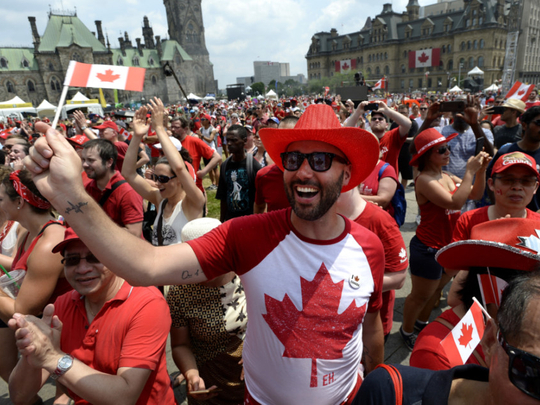
After a long time, we were back in Ontario and celebrating Canada Day with friends, and it was hot as Dubai in summer.
“Tell him you may pass out’, said a friend who was silently sweltering. She advised my wife that she should be pushy with the management of the student apartment building in getting the air-conditioning fixed.
The person at the desk was stalling, saying that it was the long weekend for the holidays and everyone was away.
We had leased an apartment that houses students in the university town of Waterloo, to be nearer our younger son who was studying through the summer holidays. (Free advice: never stay in a university town in Canada as they are deadly boring, especially in summer when no one’s around).
The housing manager gave us the option of moving to another apartment and we hurriedly moved our stuff to the new place, and it was bliss as we could push the thermostat down to the low 20s.
Elsewhere in Peterborough, our eldest son informed us on WhatsApp that he can’t stand the heat any longer and was going to purchase a portable air-conditioner for his apartment.
His last stop before coming to Canada, was Bengaluru in India, with its lush vegetation and its mild and pleasant weather. Before that he was in Dubai where one truly does not know what the temperature is outdoors, as you are hopping in and out of air-conditioned metro trains, Uber cabs, and into offices and malls that for some reason are freezing cold.
Say ‘Canada’ to people and everyone assumes that this is a ‘winter wonderland’ and there are bad jokes about how Canadians ‘wonder’ what they are doing in the country in ‘winter’, and that everyone walks around in the country with beaver pelt hats and works, shops and dines underground.
Yukon’s freeze
Still, a small town in Yukon holds the world record for the lowest temperature at -63 degrees (yes, minus) when your breath crackled in the air as you exhaled and lingered on for a few minutes, exposed skin froze within minutes and one could hear dogs bark from kilometres away cause of the still frozen air.
On the other hand, two towns, Midale and Yellowgrass, share the honour of being the hottest places in Canada ever, when they recorded the daytime temperature of 45 degree Celsius, more than 20 degrees higher than average in July. (That’s of course, nothing compared to Minhad Air base, near Dubai, that recorded 50 degrees Celsius when I was covering the weather beat as a journo).
The sun rays here actually seem like they are burning into the skin because of the hole in the ozone layer that has made the ultra-violet (UV) levels higher. The Montreal Protocol that was agreed on globally in 1980s to phase out ozone-depleting chemicals, such as CFCs found in fridges, propellants and foam-blowing agents, has helped halt the depletion of the ozone to some extent.
Still, I overheard ‘uni’ kids making lame jokes about how it is so hot here that hens are laying hard-boiled eggs and cows giving evaporated milk. While reading the police warnings to people to take care from the heat and to hydrate and carry sunscreen cream to the Canada Day celebrations across the country, I also came across a news report that UAE was planning to tow an iceberg from the Antarctic to Fujairah to solve its drinking water problems and become the first country in the region to offer glacier tourism.
Two Canadian entrepreneurs are doing something even more unusual: They are canning air from Banff in Alberta and selling it to residents of polluted Chinese cities. They recently expanded and include glacier and spring waters as health and wellness products.
Mahmood Saberi is a storyteller and blogger based in Bengaluru, India. Twitter: @mahmood_saberi.








